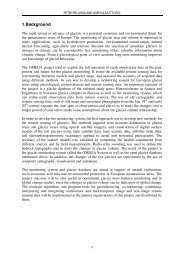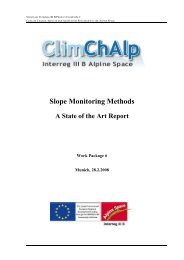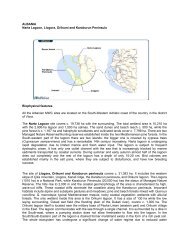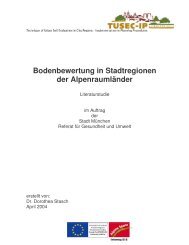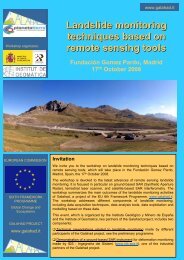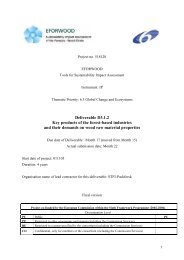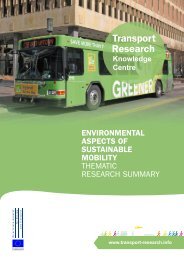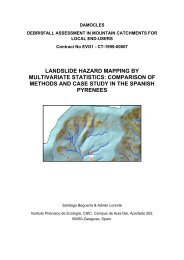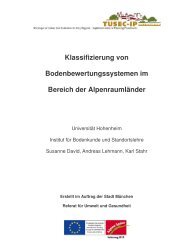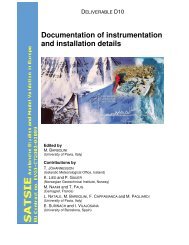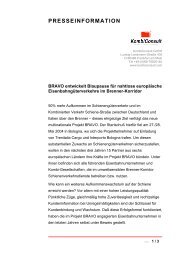Decision Support Tools - Thematic Research Summary - Transport ...
Decision Support Tools - Thematic Research Summary - Transport ...
Decision Support Tools - Thematic Research Summary - Transport ...
You also want an ePaper? Increase the reach of your titles
YUMPU automatically turns print PDFs into web optimized ePapers that Google loves.
• the main reasons for deviations between ex-ante and ex-post economicperformances are the overestimation of demand and the underestimation ofinvestment costs;• in all considered countries, environmental assessments are mandatory but to verydifferent extents;• project uncertainties (such as implementation delays, investment costs, demandand tariffs) have mainly been assessed through sensitivity analyses and only intwo cases using scenario analyses (moreover the analysis of the uncertaintiesmainly concentrates on a project’s economic performance to the detriment of thefinancial performance).With respect to the funding of large transport infrastructure projects, research hasreviewed the literature on economics of infrastructure funding and mark-up methods andthe development of scenarios to address the problems of the current funding framework.<strong>Research</strong> has made a contribution to the development of a methodology for mark-ups tomarginal cost pricing, applicable to all modes as well as links and nodes, which involves amore detailed analysis of network aspects, the division of power between severalgovernments and operators, quality aspects and uncertainty issues (FUNDING, 2007).Furthermore, a methodology for creating a European multi-infrastructure fund has beendeveloped and tested, which considers possible structures of such a fund, the decisioncriteria, acceptability, efficiency and spatial equity effects. A spatial computable generalequilibrium model has been used to compare pricing and revenue use strategies,assessing the economic impacts of these measures and their distribution. Thismethodology has been demonstrated for a number of selected scenarios and geographicalareas. In particular, this methodology has been used to assess the impacts of the priorityprojects for the regions of the European Union, comparing the scenarios with and withoutEU subsidies (FUNDING, 2007).<strong>Research</strong> has also developed harmonised guidelines for assessing Europeaninfrastructure projects and transport costing at EU level, starting from a comparison andanalysis of the current practices in project assessment in Europe. The main elements ofthese guidelines are (HEATCO, 2006):• general issues (e.g. non-market valuation techniques, benefit transfer, treatment ofnon-monetary impacts, treatment of indirect socio-economic effects, etc.);• value of time and congestion (e.g. commercial goods traffic time savings andtreatment of congestion, unexpected delays and reliability);• value of changes in accident risks (e.g. valuing accident costs);• environmental costs (including air pollution, noise, global warming);• costs and indirect impacts of infrastructure.<strong>Thematic</strong> <strong>Research</strong> <strong>Summary</strong>: “<strong>Decision</strong> <strong>Support</strong> <strong>Tools</strong>” Page: 46 of 74<strong>Transport</strong> <strong>Research</strong> Knowledge Centre




